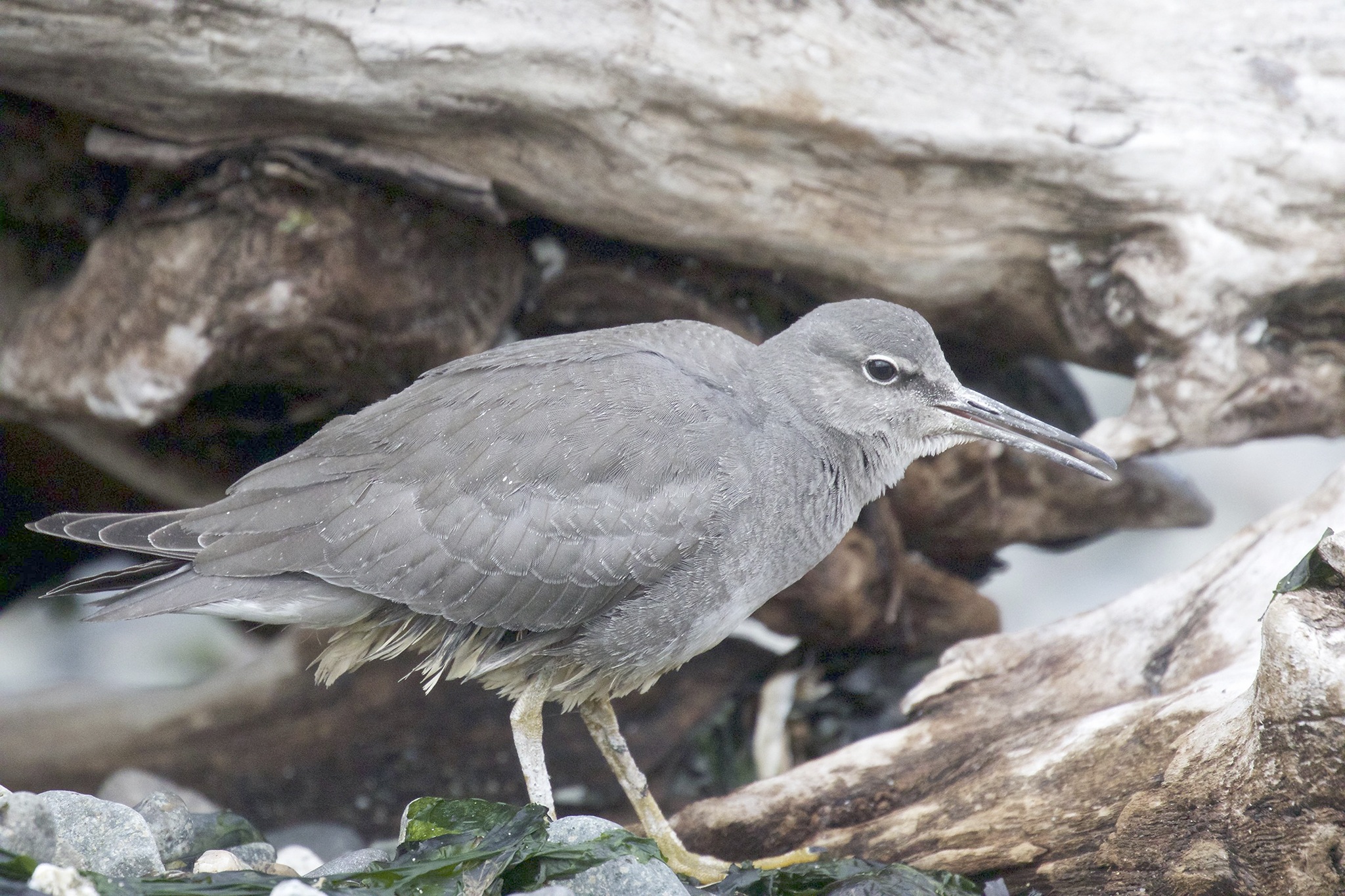The Cornell Lab of Ornithology (Heteroscelus incanus) and Seattle Audubon’s Bird Web (Tringa incana) differ on the Latin name for this bird; I have listed both, but I suspect Cornell’s is the correct name. This photo was taken by Gregg Thompson last Monday at Carkeek Park in Seattle, a bit out of its “normal” zone.
General Description: Most Wandering Tattlers seen in Washington are in breeding plumage, with a heavily barred breast being the main indicator of breeding plumage. This photo is probably a juvenile. Their size is 10.2 to 11.8 inches long, with a wing span of 20 inches, and weighing about 4 ounces. They are medium size for a shorebird, with short yellow legs and a moderately long, straight bill. The upper parts are a uniform gray. Their most distinguishing characteristic is their teetering gait, bobbing their tail and butt up and down as they walk.
Habitat: Found on rocky coasts, jetties, and beaches while in Washington, but on their breeding grounds they can be found along rocky streams in northwest Canada and Alaska.
Behavior: Wandering Tattlers are solitary birds both on the ground and in flight. They move quickly and nervously, bobbing and teetering while searching for prey among the rocks. On their breeding grounds they wade in streams gleaning prey from surface rocks. The name “tattler” comes from a series of alarm calls of one pitch notifying the neighborhood of a perceived threat. The “wandering” comes from their presence over vast portions of ocean.
Diet: Wandering Tattlers eat insects, crustaceans, worms, and small animals that scramble among the rocks.
Nesting: Wandering Tattlers nest in the far north, on the ground among rocks or in a hollow near a stream. They sometimes use nesting materials of twigs, rootlets and leaves, or may lay their four eggs directly on the rocks. Both parents incubate for 23 to 25 days. The young leave the nest within a day of hatching and can feed themselves immediately, but are tended by both parents for a week. One parent then leaves and the other parent then tends the young until they are independent.
Migration: Wandering Tattlers travel from Alaska and northwest Canada to the southern California coast and beyond, with some birds crossing the Pacific Ocean to spend the winter in Australia and on islands in the South Pacific. By the second week of August, most of the Wandering Tattlers seen are south-bound juveniles, and are common into October. The spring migration runs mid-April to mid-May.
Conservation Status: The Canadian Wildlife Service estimates the population of Wandering Tattlers at about 10,000 birds, though because they disperse across such a wide range they are hard to track.
When &Where to Find in Grays Harbor: The best time to see these birds is July though September and even into October. The best place to look is on a rocky jetty or breakwater out on the coast. They can be seen right now in both Westport and Ocean Shores; just watch for a gray bird hopping along on the rocks, bobbing its butt.


